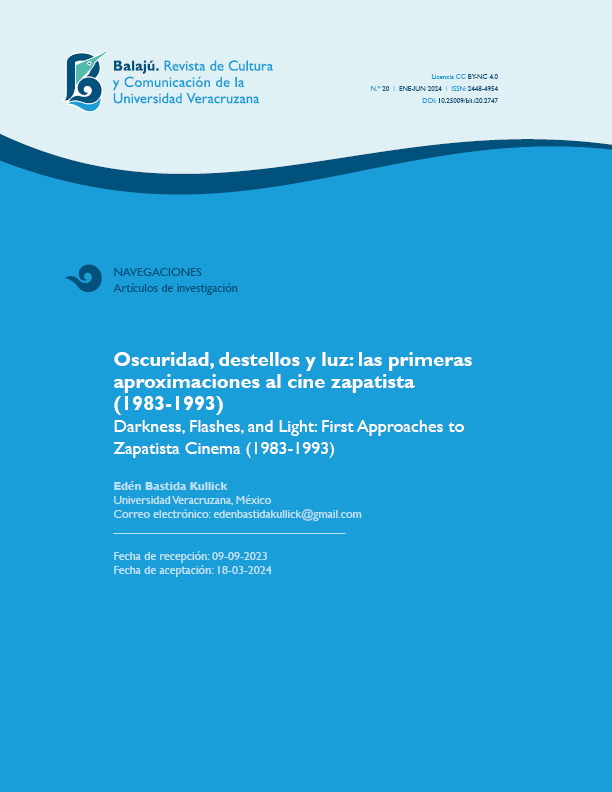Abstract
Abstract
This article traces the bases and evolution of Zapatista cinema during its ten years in clandestinity (1983-1993). Although the high point of audiovisual production about and by the Zapatistas occurred soon after the 1994 uprising, this review allows us to identify elements of image consumption and production during the previous years, which would give way to the audiovisual imaginary that exists today and would gradually materialize in the projects and narratives that they refer to as “cinema of the comrades”.
Darkness, flashes, and light are three stages of historical reconstruction that take shape by way of a meticulous recollection of oral memories, registers of personal experiences, and analysis of writings and documents. This historiographical tracing interweaves questions about the role of cinema, economic and sociopolitical conditions, technological advances, and processes that took place within the movement during that period.
Keywords: Zapatista cinema, Militant cinema, EZLN, social movements.

This work is licensed under a Creative Commons Attribution-NonCommercial 4.0 International License.

